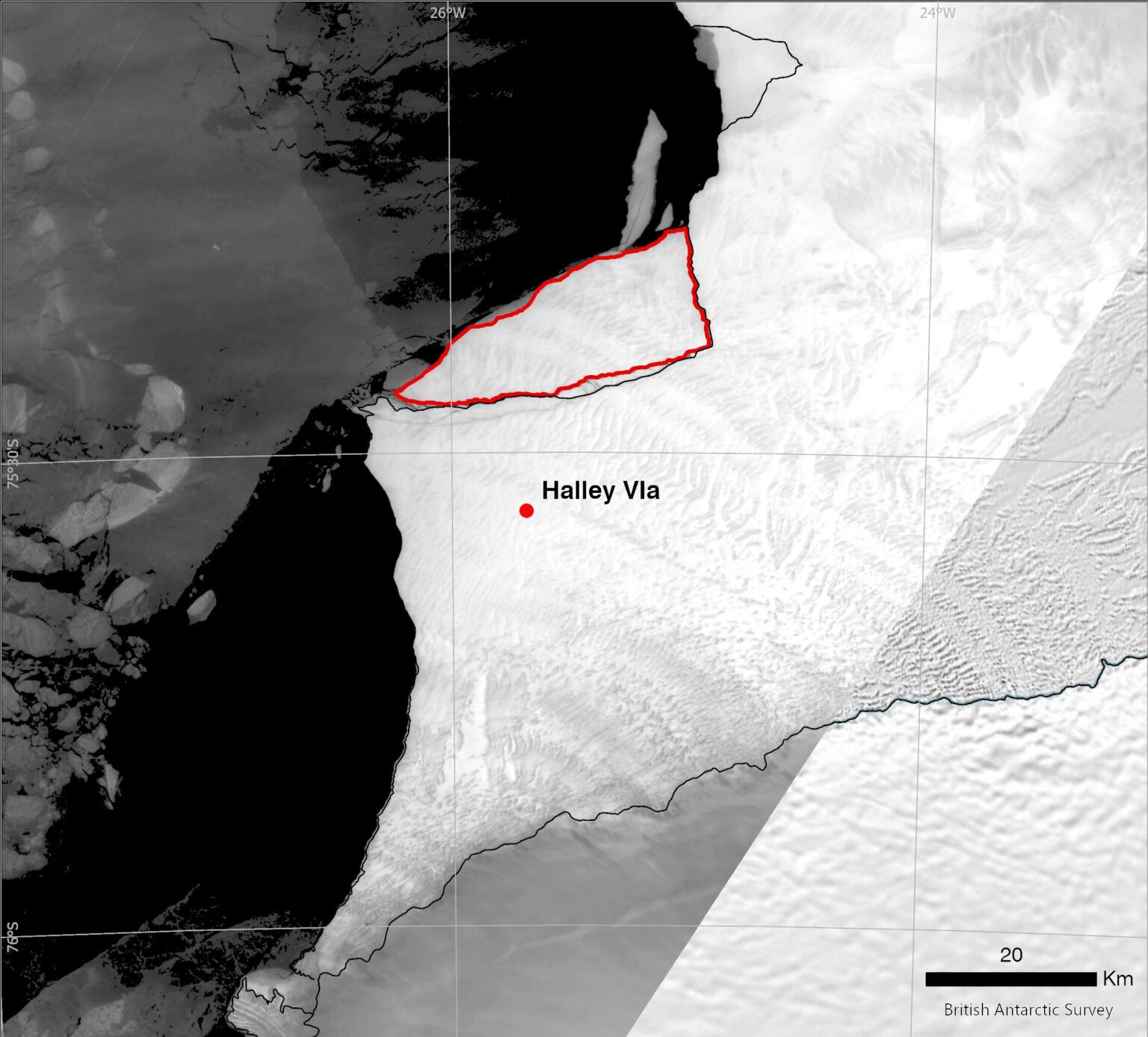Scientists have witnessed the calving of a huge iceberg in Antarctica. The satellites helped them in this.Now the researchers will monitor the further fate of the giant ice floe and how it affects everything around.

Breaking off a new iceberg
A huge iceberg (380 km2), the size of the Isle of Wight, broke off from the 150m-thick Brunt Ice Shelf. It was formed after a crack suddenly appeared in the shelf a few weeks ago. The final fault occurred early on Monday morning, May 20.
Everything started when a 14-kilometer chasm formed in the ice floe at an angle of ninety degrees to the existing Halloween Crack. This happened after a long period of weakening of the McDonald Ice Rumples.
The big iceberg is separating from the general area for the third time in the last four years. This happened about ten years after scientists from the British Antarctic Survey (BAS) first discovered the growth of huge cracks in the ice. It is believed that all this has nothing to do with climate change.
British Antarctic Survey Station
The Halley Research Station of the British Antarctic Survey (BAS) is located on the Brunt Ice Shelf. Glaciologists of this organization, who monitor the behavior of the shelf, say that the speed of movement of the shelf where the research station is located has stabilized since the previous calving last year, and do not expect a reaction to this new event.
In 2016, BAS took precautions and moved the Halley Research Station 23 km further from the crack after it began to expand. Since 2017, employees have been at the station only during the Antarctic summer (from November to March). There are currently no staff at the station. The new team will return to Halley in November.
Glaciologists’ Explanation
Dr. Oliver Marsh, a glaciologist who has spent four seasons working on the Brunt Ice shelf, first detected the calving from GPS equipment.
“Tabular iceberg calving is part of the natural behavior of ice shelves but often causes large changes in ice shelf geometry and can impact local ocean circulation. Our science and operational teams continue to monitor the ice shelf in real-time to ensure it is safe, and to maintain the delivery of the science we undertake at Halley,” he says.
Professor Adrian Luckman, a professor at Swansea University, studies Antarctic ice shelves. He says that the floating ice shelves of Antarctica are gradually increasing due to the flow of ice and occasionally decreasing due to the calving of icebergs. The balance between these two processes affects their ability to hold ice on land.
Therefore, it is a matter of concern that even in this relatively cold sector of Antarctica, three major iceberg calving has occurred over the past 3-4 years. For example, the Brunt Ice shelf provides a lot of data that helps us understand the calving process and predict the future evolution of these important ice bodies.
According to phys.org


